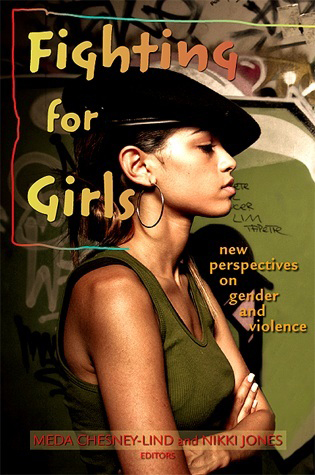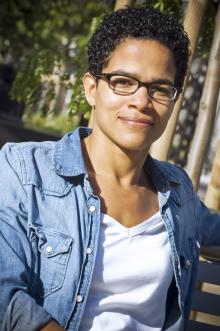
Research by UCSB Sociologist Finds Increase in Arrests, Not Levels of Aggression and Violence Among Adolescent Girls

Contrary to what films such as "Mean Girls," "Fab Five: The Texas Cheerleader Scandal," and "Heathers," might suggest, aggression and violence among teenage girls have not become common practice. Research by a sociologist at UC Santa Barbara suggests that these popular titles have it wrong –– that the mean girl phenomenon is all hype. More troubling is the fact that the real problems facing girls today has been lost in this mean-girl furor.
According to Nikki Jones, associate professor of sociology at UCSB, girls haven't gone wild. What has increased, however, is the frequency with which they are arrested. In her new book, "Fighting for Girls –– New Perspectives on Gender and Violence" (State University of New York Press, 2010), she asserts that zero-tolerance policies in schools and law enforcement's mandatory arrest policies make it appear as though incidents of aggression and violence are on the rise. In reality it is the number of arrests –– not levels of aggression –– that shot up over the last two decades.
"If you look at the actual numbers of incidents, you don't see dramatic spikes," Jones said. "But you do see dramatic spikes in the number of arrests –– particularly for African American girls." This data, she added, is widely available but often ignored. She cited a recent study by the Southern Poverty Law Center that indicates the greatest increase of suspensions since the adoption of zero-tolerance policies in schools has been for African American girls. "We're more likely than ever before to respond to girls' behavior in a punitive way," she said.
"Fighting for Girls" is a companion to a book Jones published last year. That book, "Between Good and Ghetto –– African American Girls and Inner-City Violence," focused on the social meaning of fighting for girls and how girls manage conflicts and violence in their neighborhoods. "I started working on research for that book in inner-city neighborhoods in Philadelphia," Jones said. "At that time there was a lot of conversation about relational aggression and mean girls, and I knew right away they weren't talking about the girls in these neighborhoods. African American girls weren't even part of the discussion."
Co-edited by Meda Chesney-Lind, professor of Women's Studies at the University of Hawaii at Manoa, "Fighting for Girls" features a broad range of perspectives and empirical studies that seek to separate facts about trends in the use of violence among girls from misconceptions perpetuated by the media. "It's very much about institutional sanctions that are placed on girls who do fight," said Jones, "and the big takeaway point is that it's not a dramatic change in behavior."
She noted that while the numbers of arrests hit an all-time for both girls and boys in the early 1990's, when those numbers started to go down later in that decade and into the 2000's, it happened much more quickly for boys than it did for girls. "Girls have never returned to the pre-1980's numbers," Jones noted. "We used to arrest girls for status offenses like running away. That's still a big one, but we're now arresting girls for person offenses –– simple assault and aggravated assault. And we're a lot more comfortable with it."
In "Fighting for Girls," Jones and her co-editor take a close look at the institutional responses to the changes in adolescent girls' behavior, many of which do not take into consideration the contexts that produce violence in girls. "The book is about fighting for girls –– fighting on behalf of girls," Jones explained. "We want to shift the conversation from what girls are doing to how adults can help them. We tend to think we have to fix girls, but what we have to fix are the settings in which they find themselves ––schools, neighborhoods, the juvenile justice system."
Jones advocates a holistic approach to addressing the lives of adolescent girls. She suggests taking into account not only their behavior, but also the circumstances that contribute to it and the systems designed to mitigate it. "We have to think seriously about whether the purpose is to punish girls or to improve their lives," she said.
For her research on violence and aggression among adolescent girls, Jones will receive the New Scholar Award from the American Society of Criminology's Division on Women and Crime as the society's annual meeting later this month in San Francisco.
Related Links



